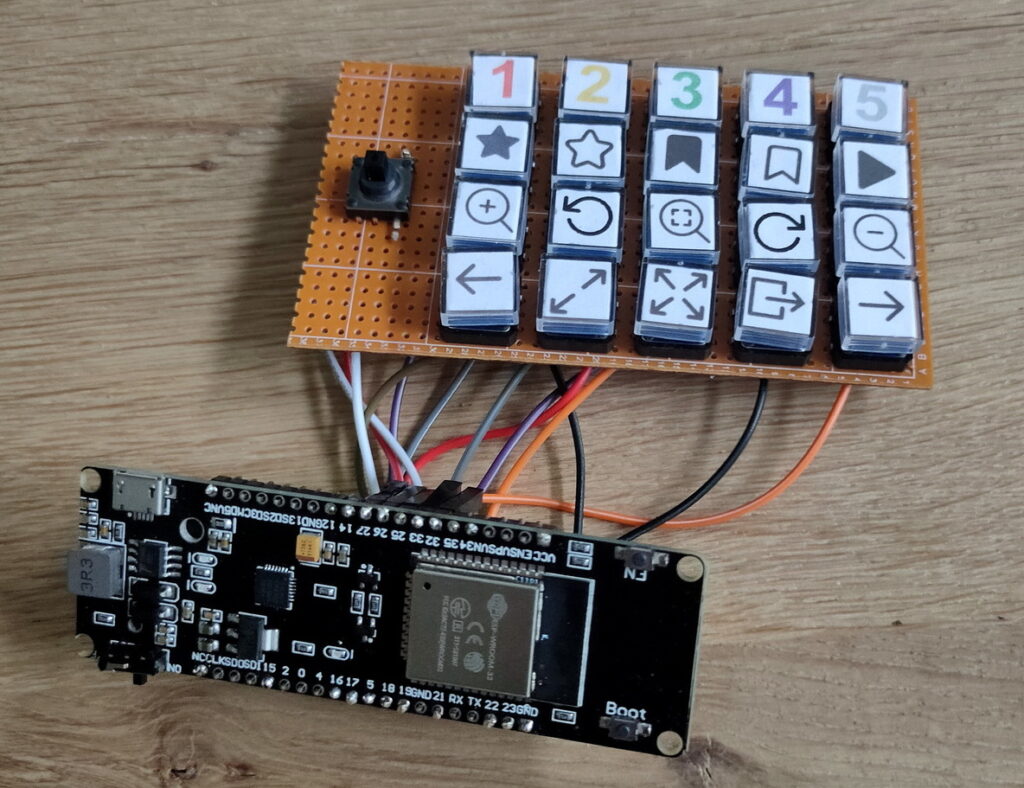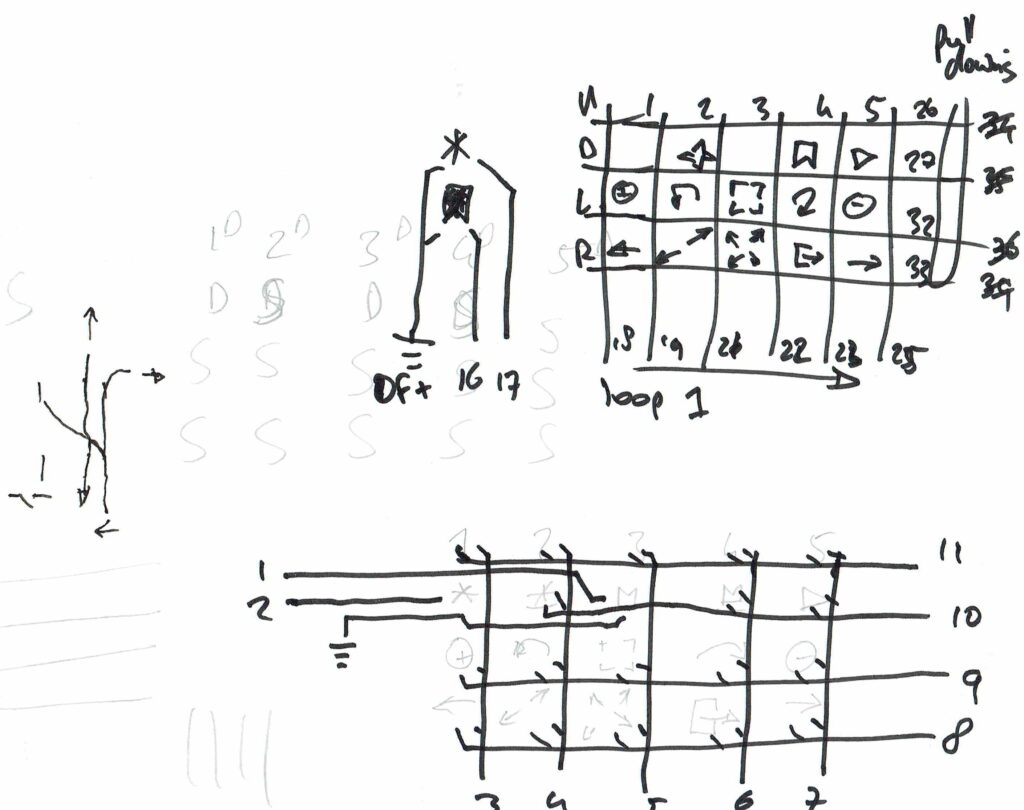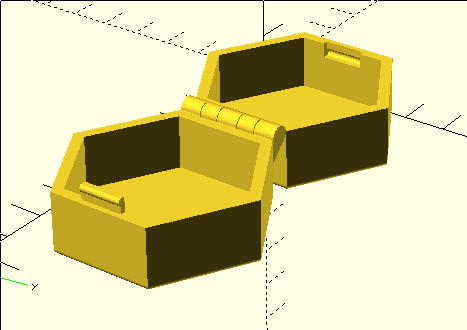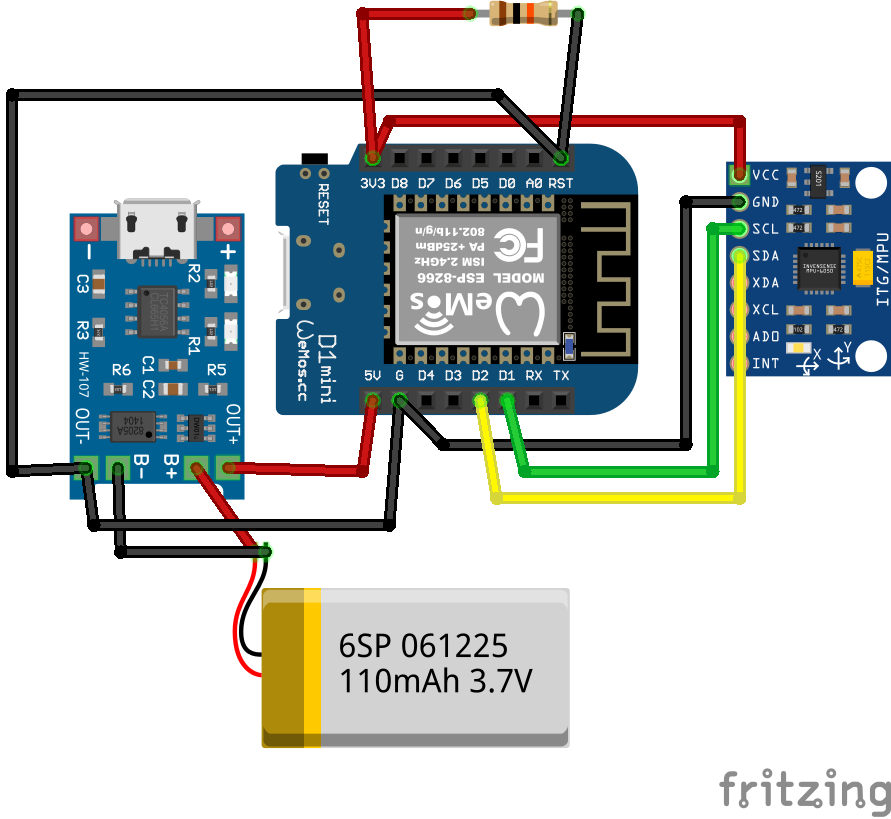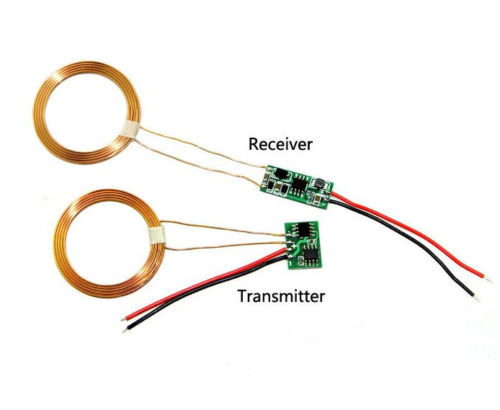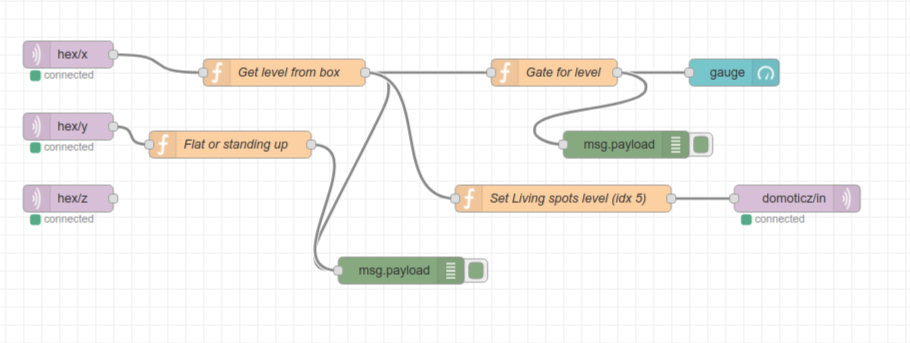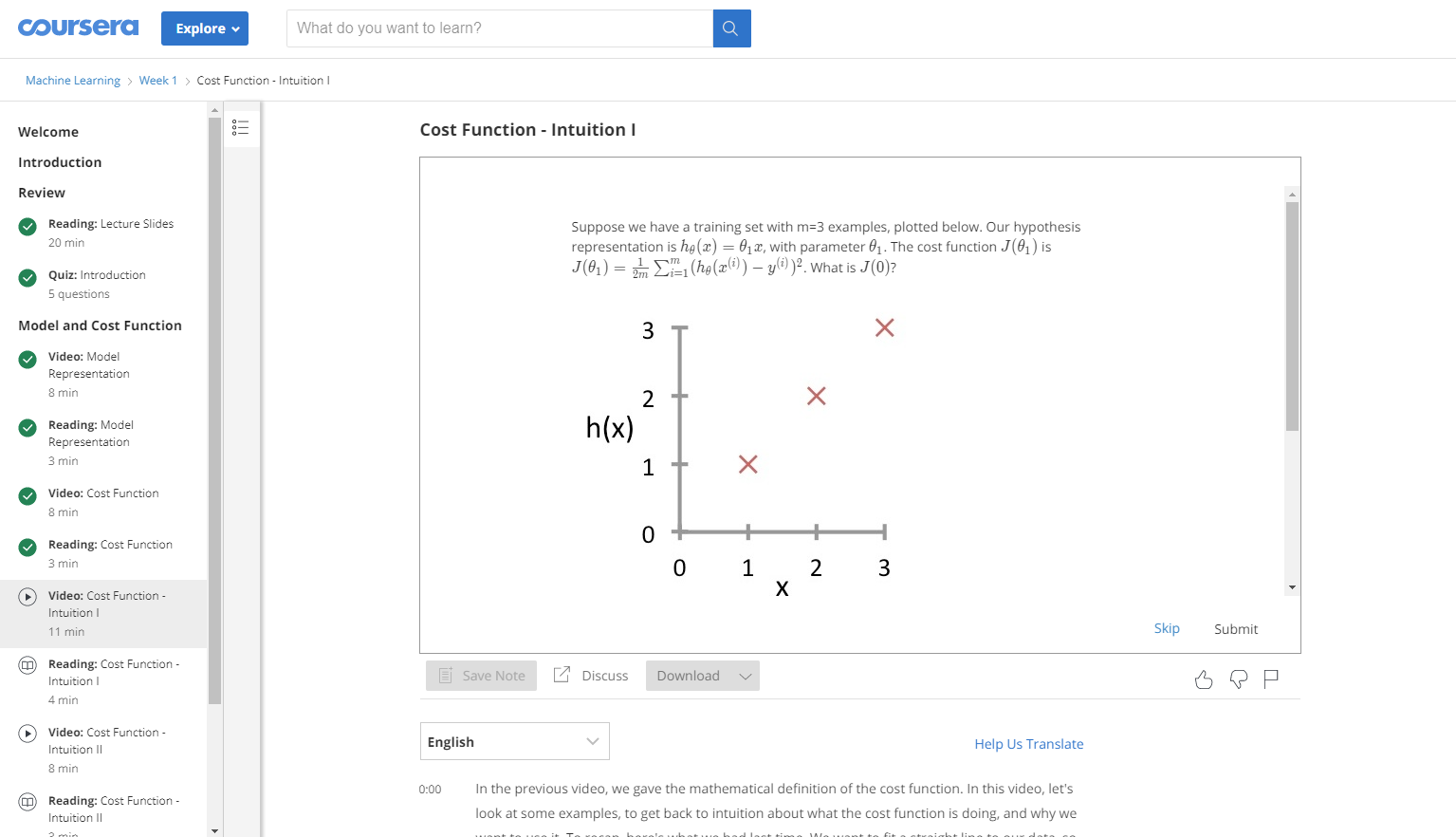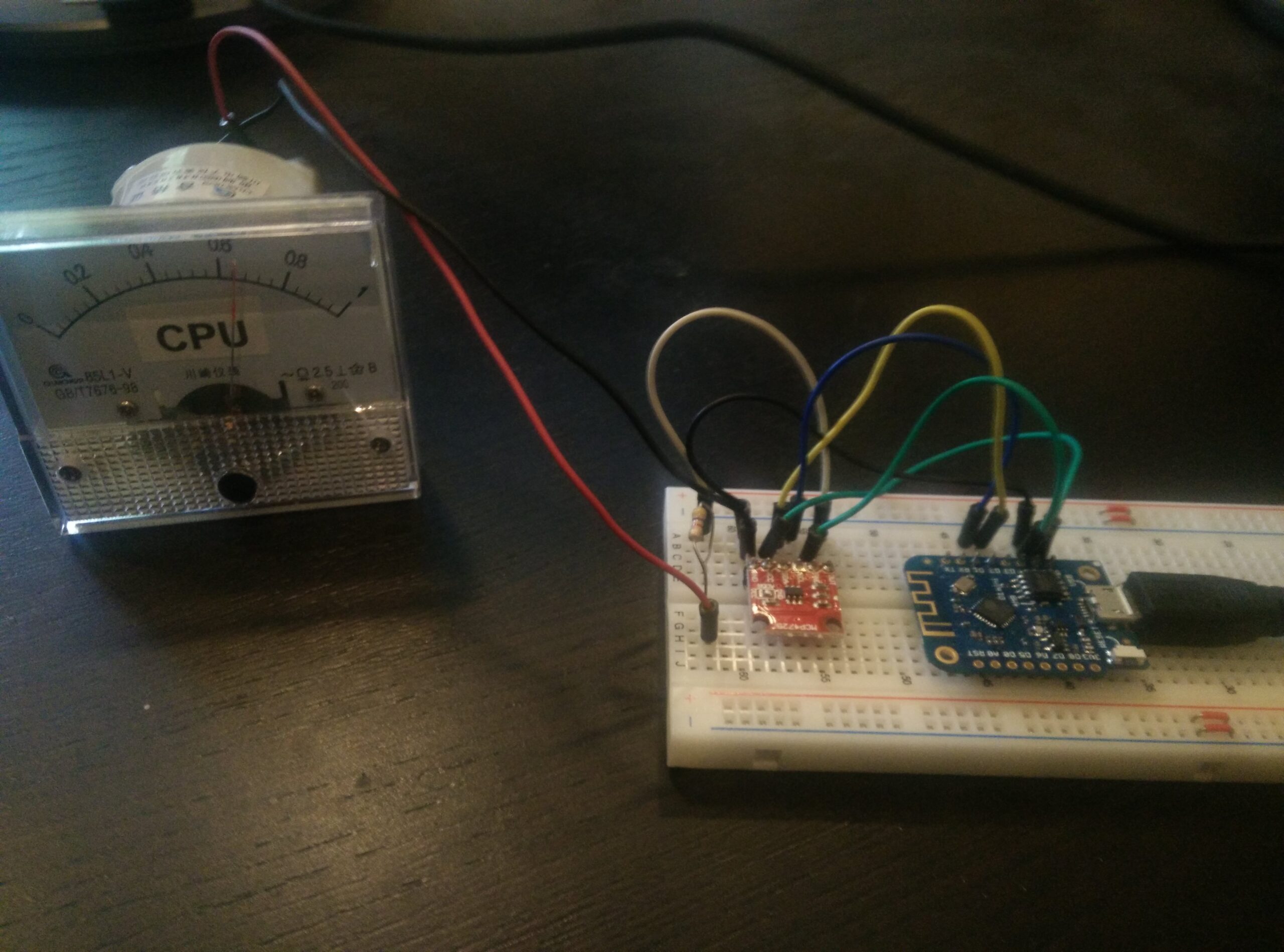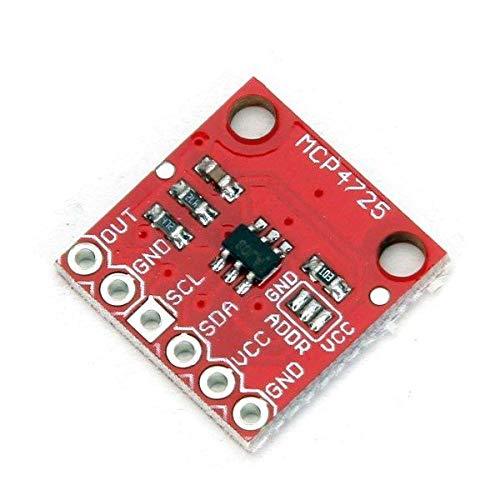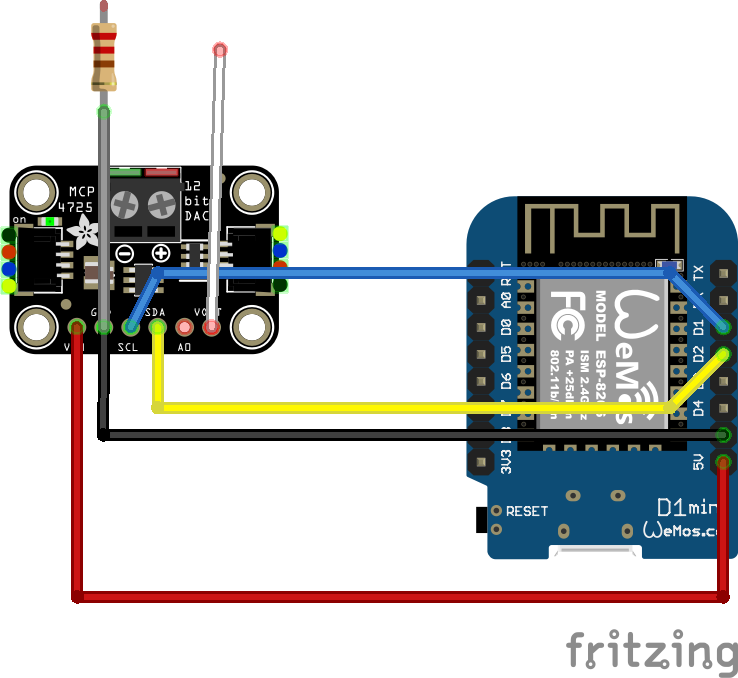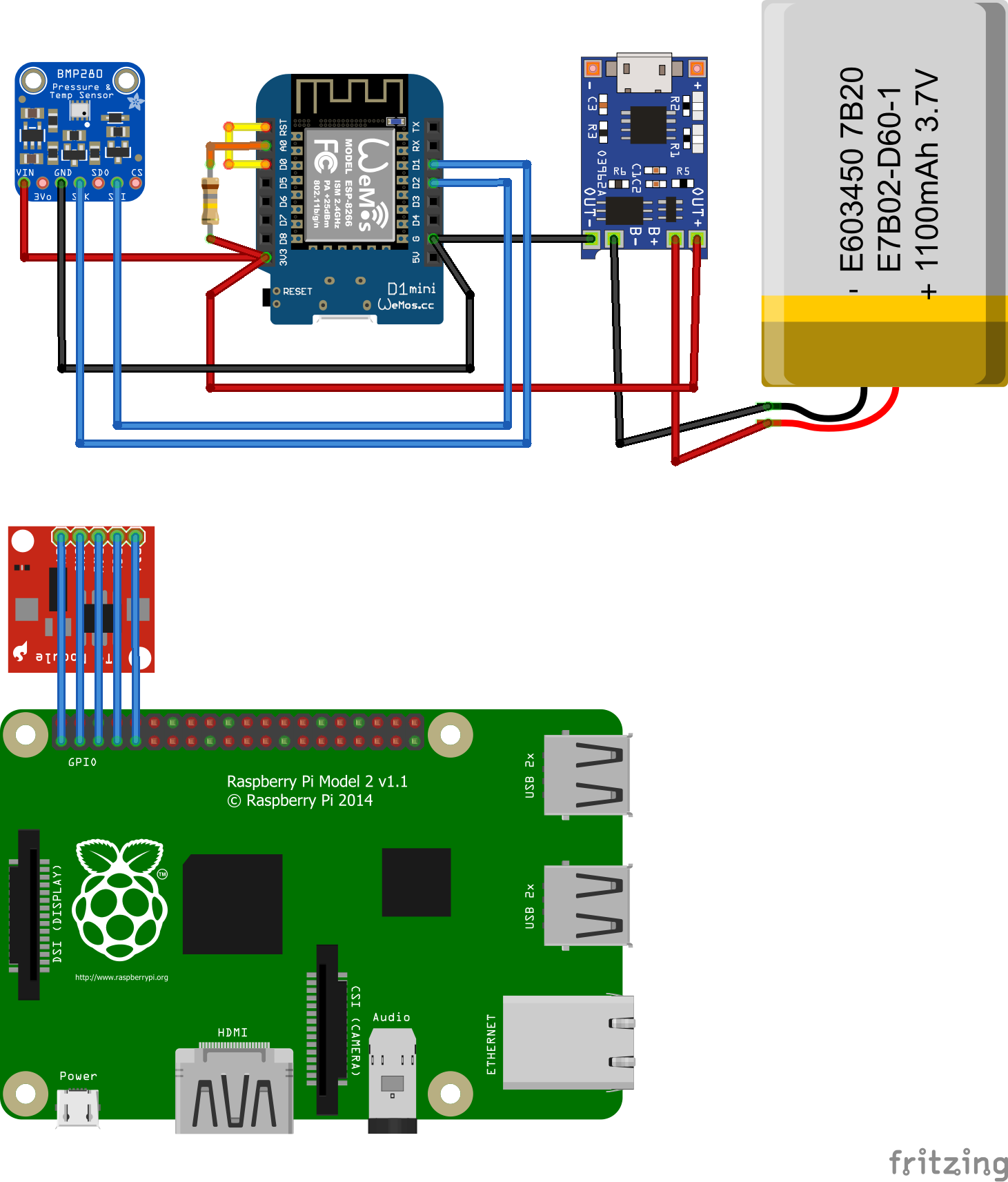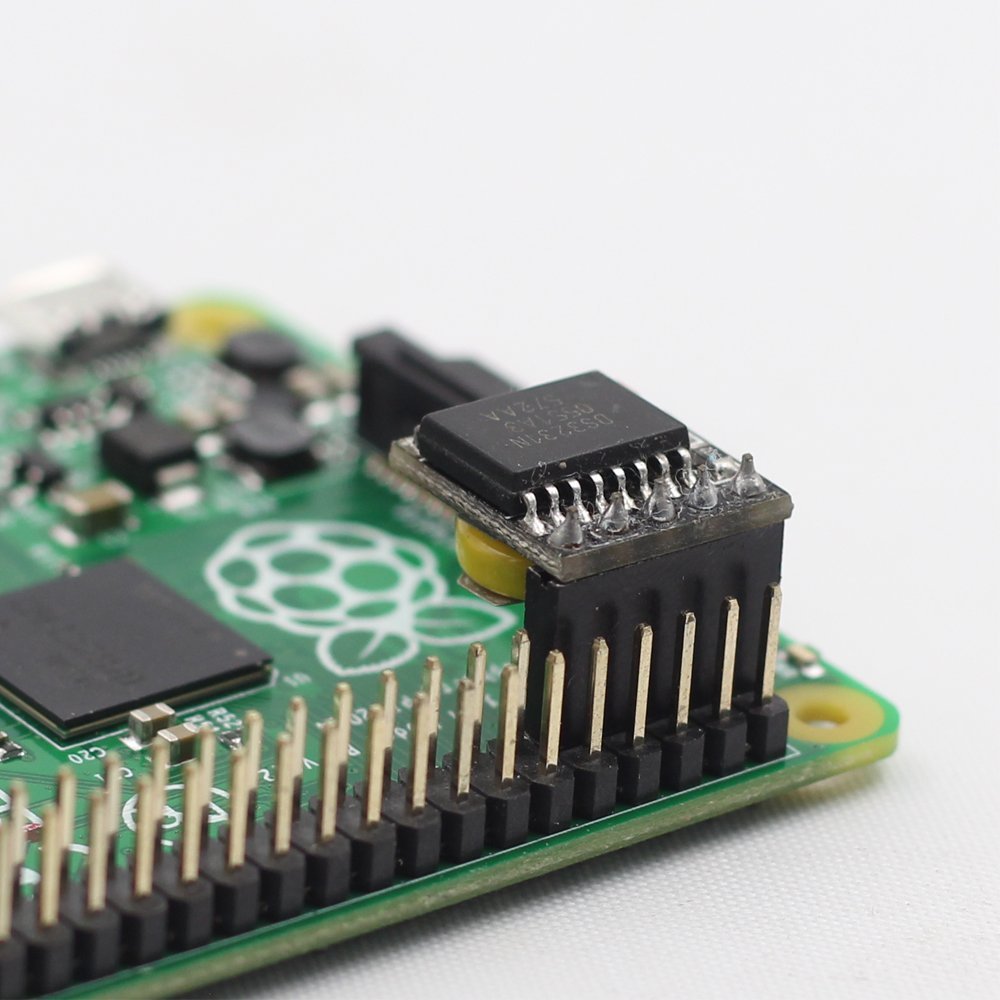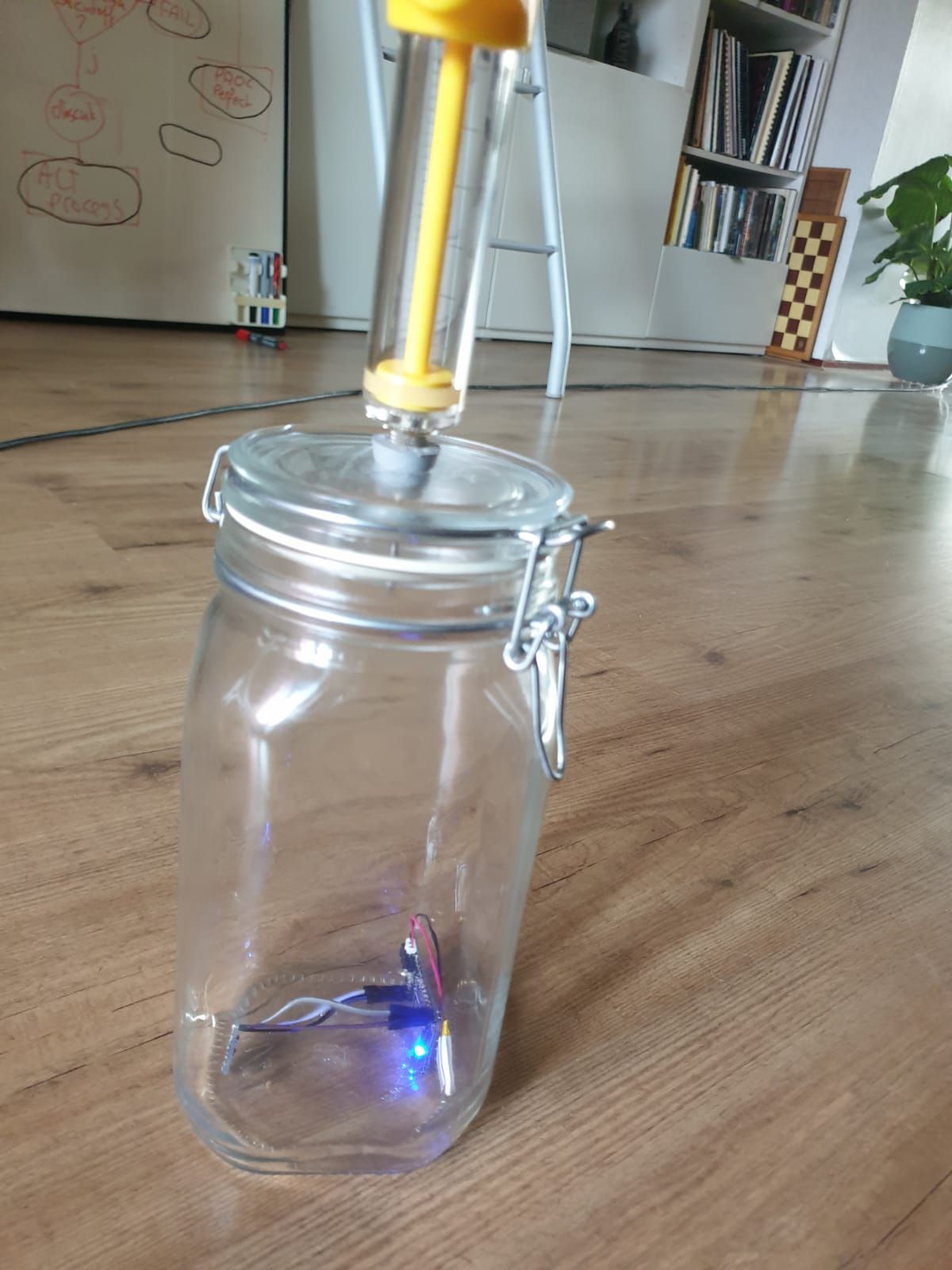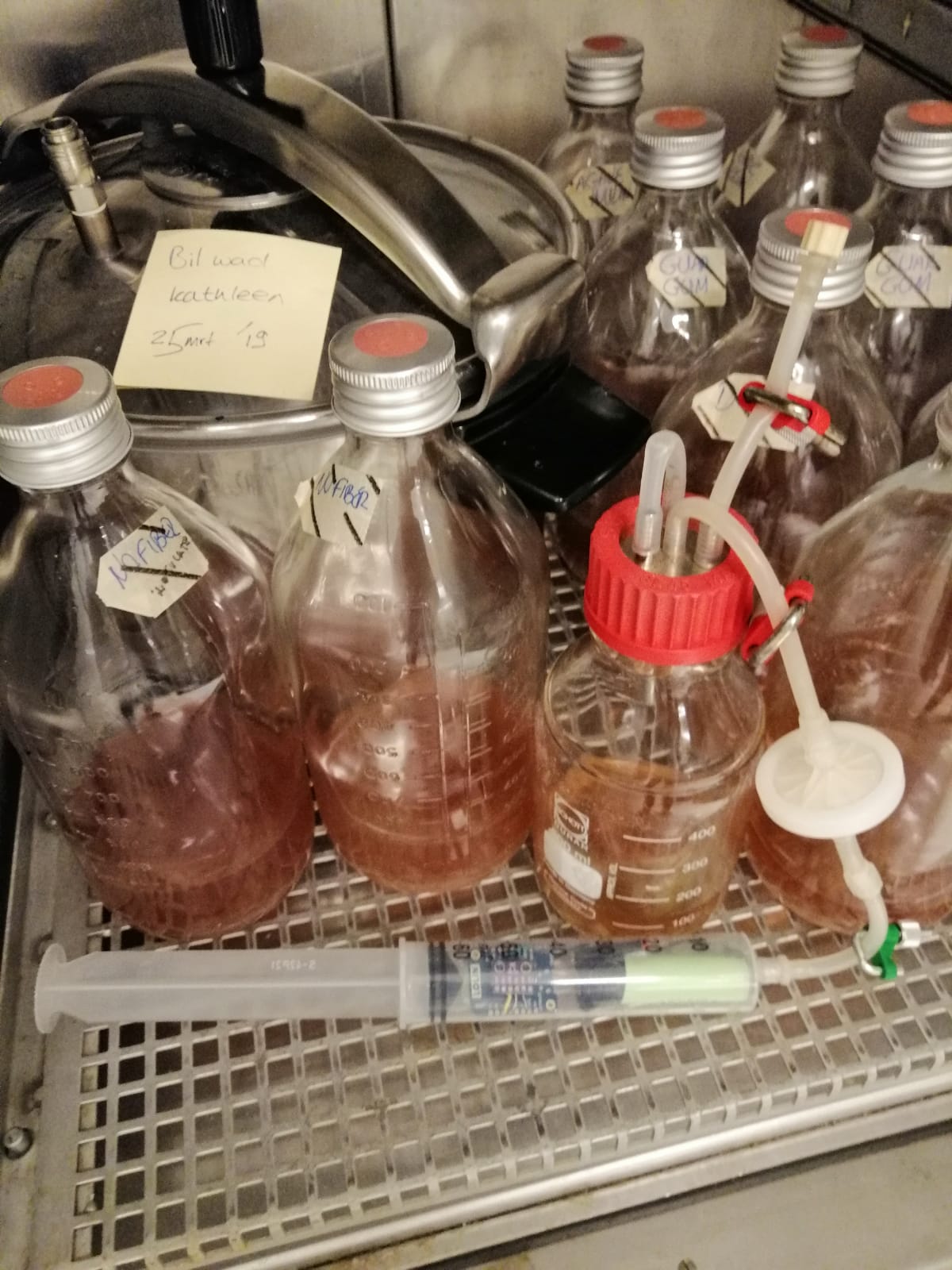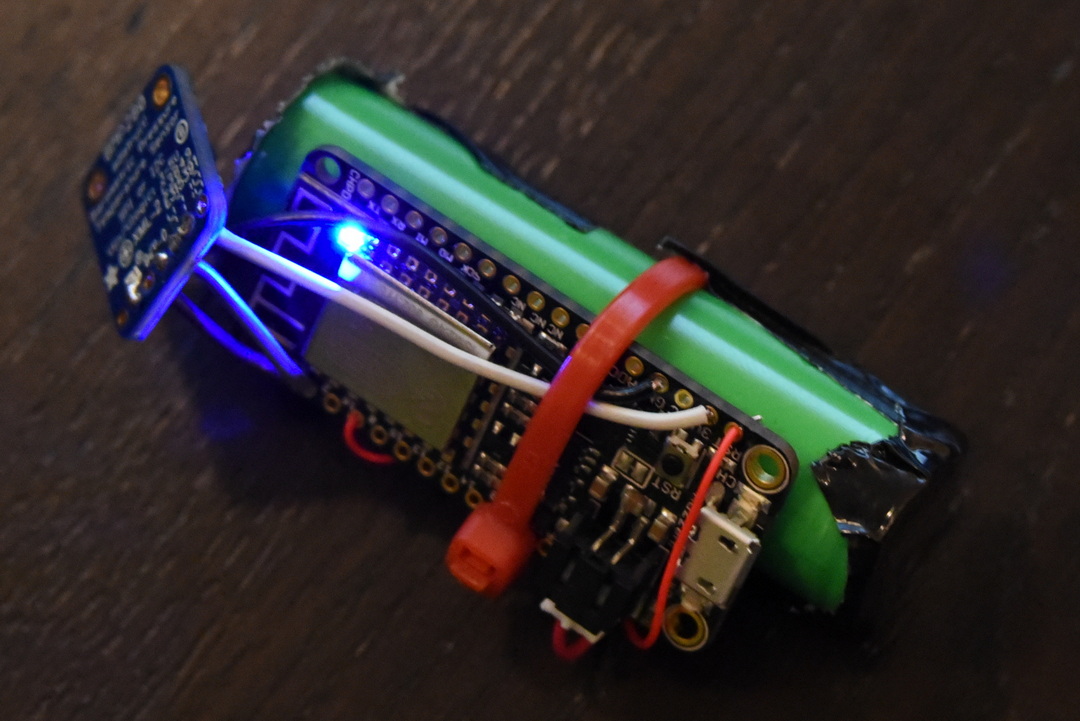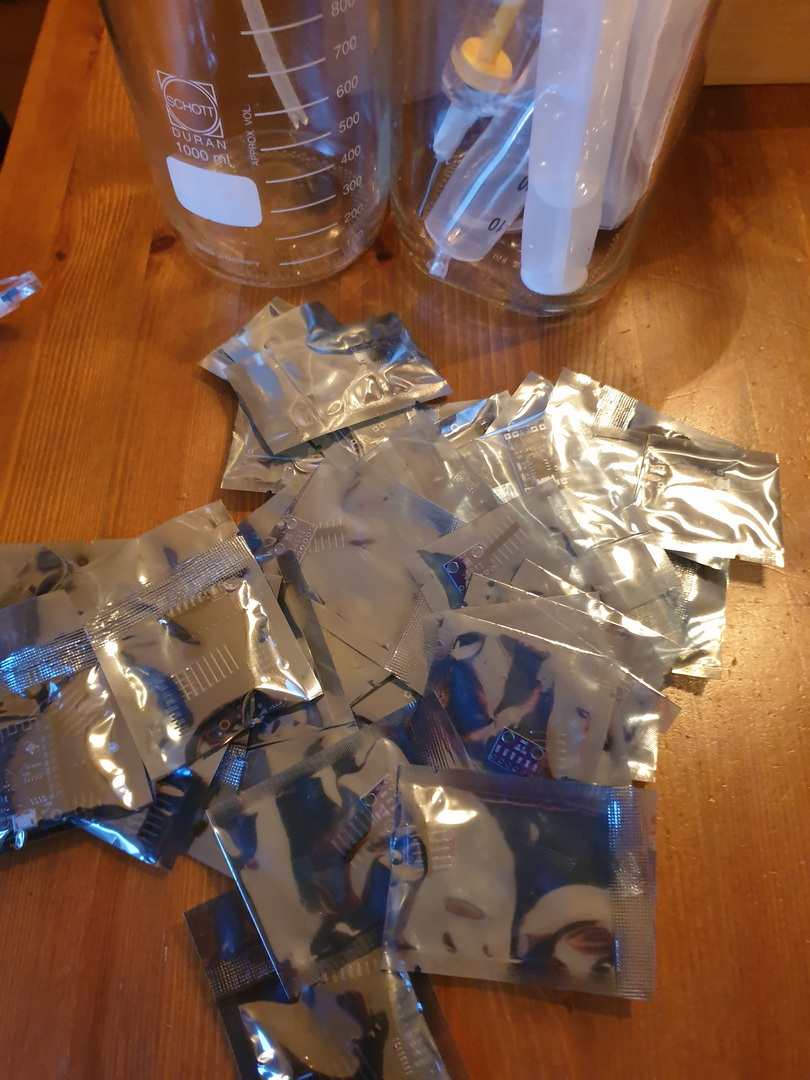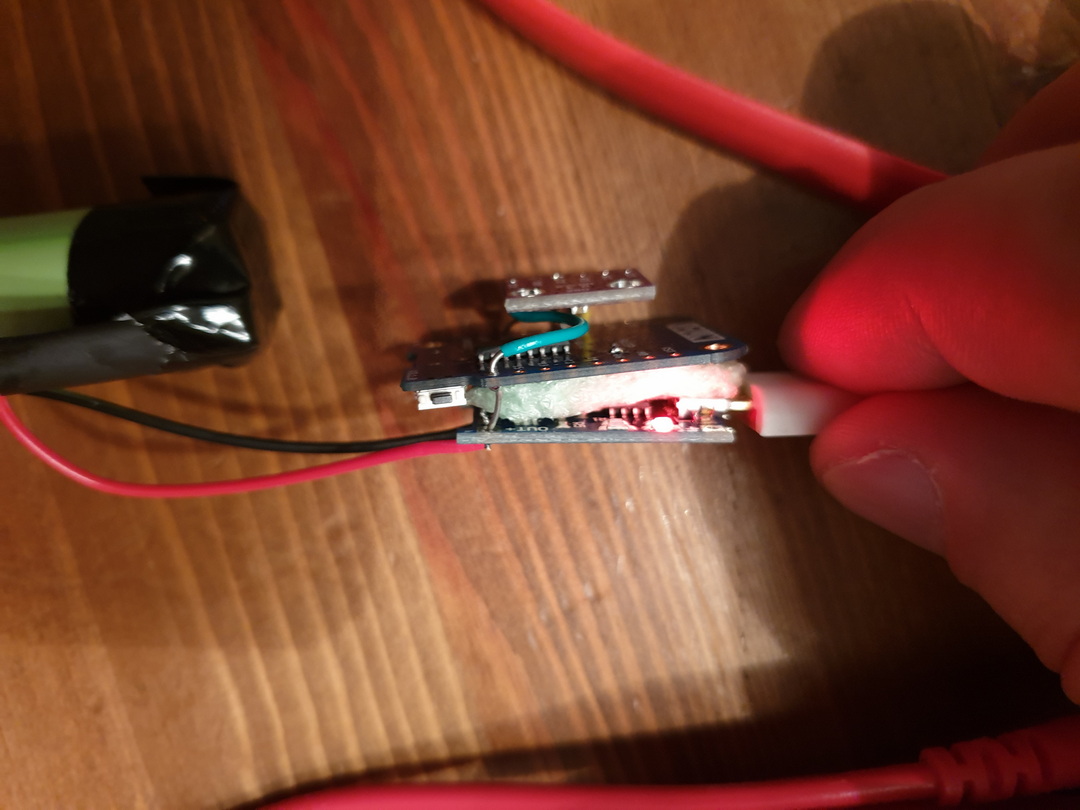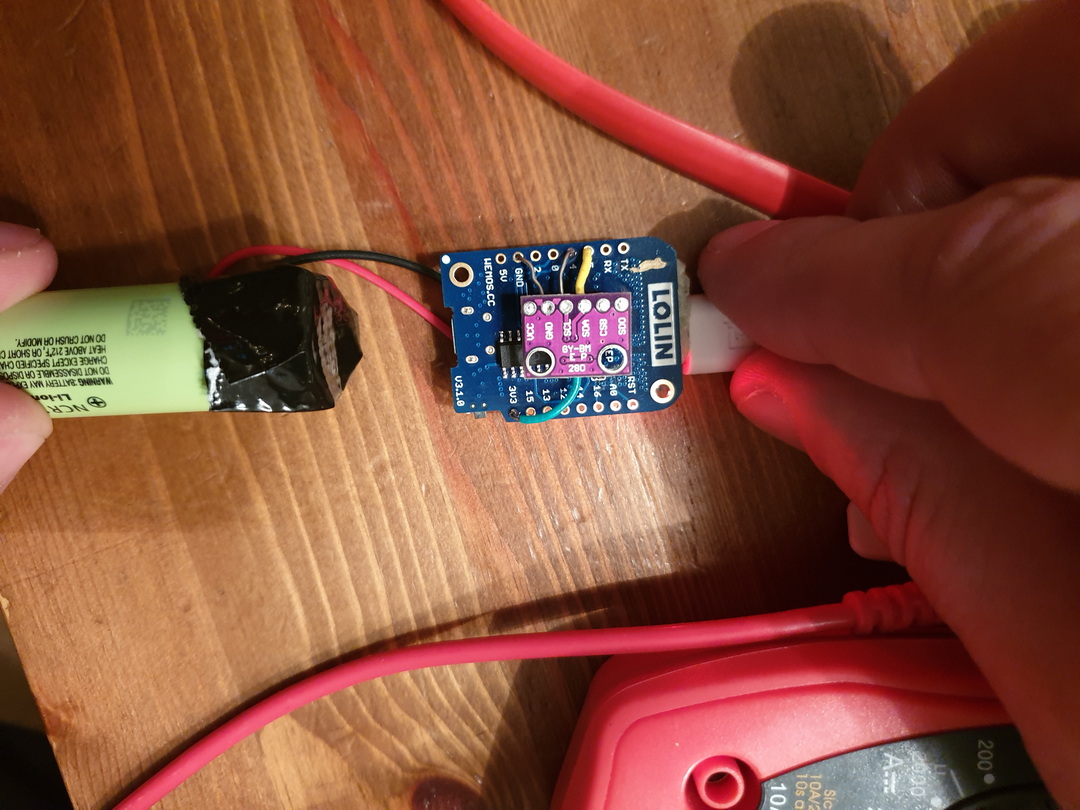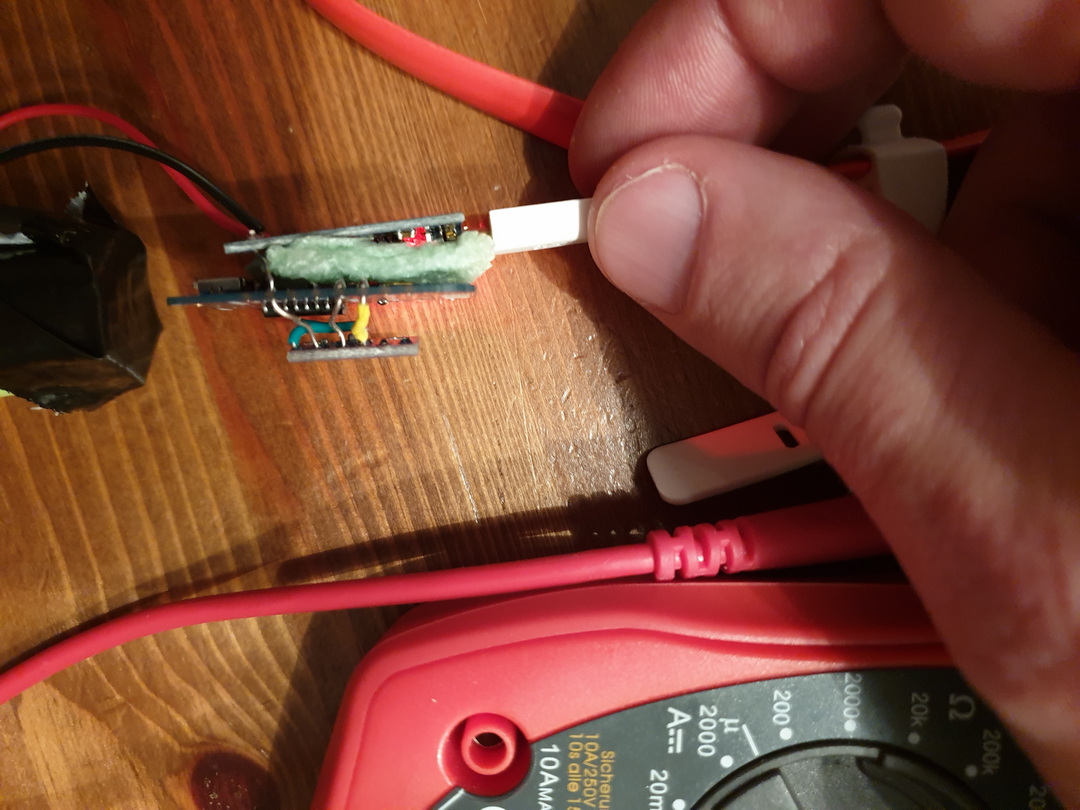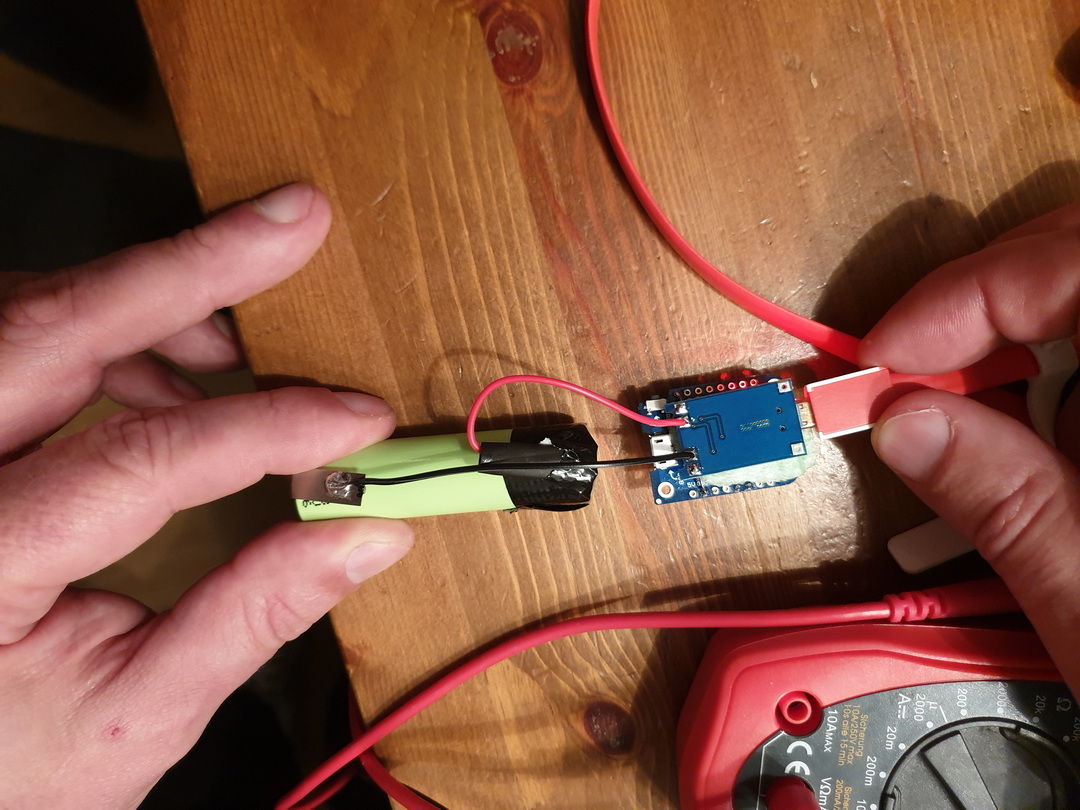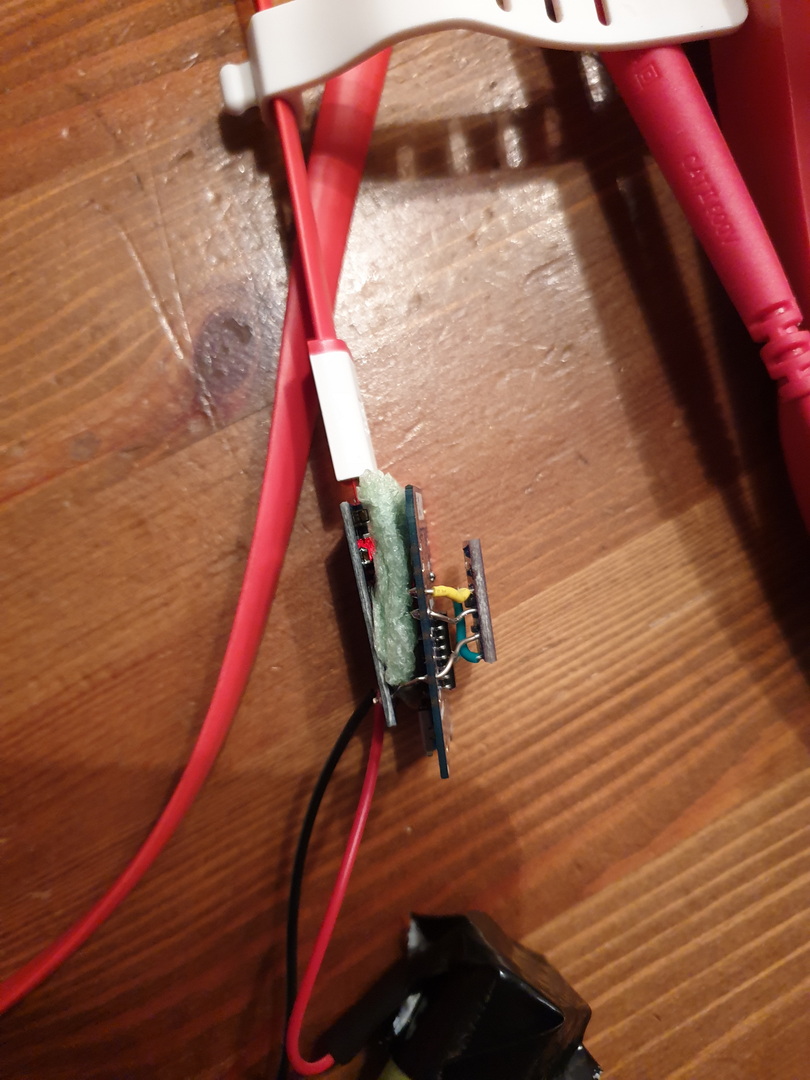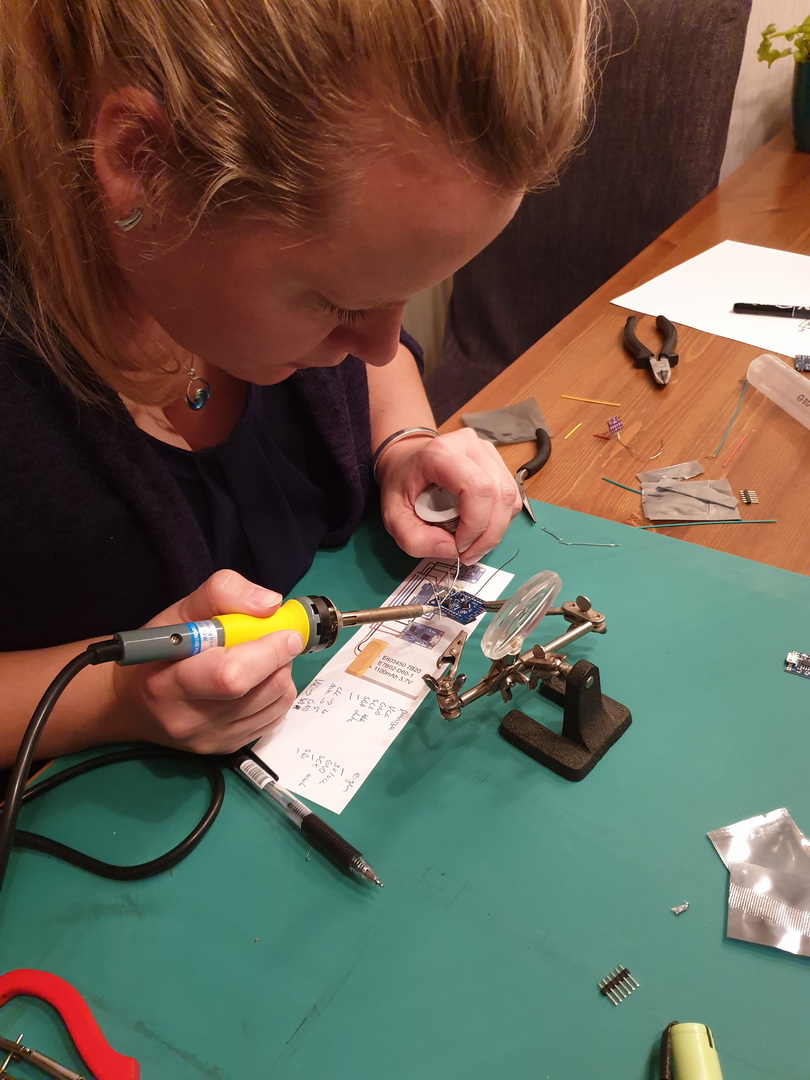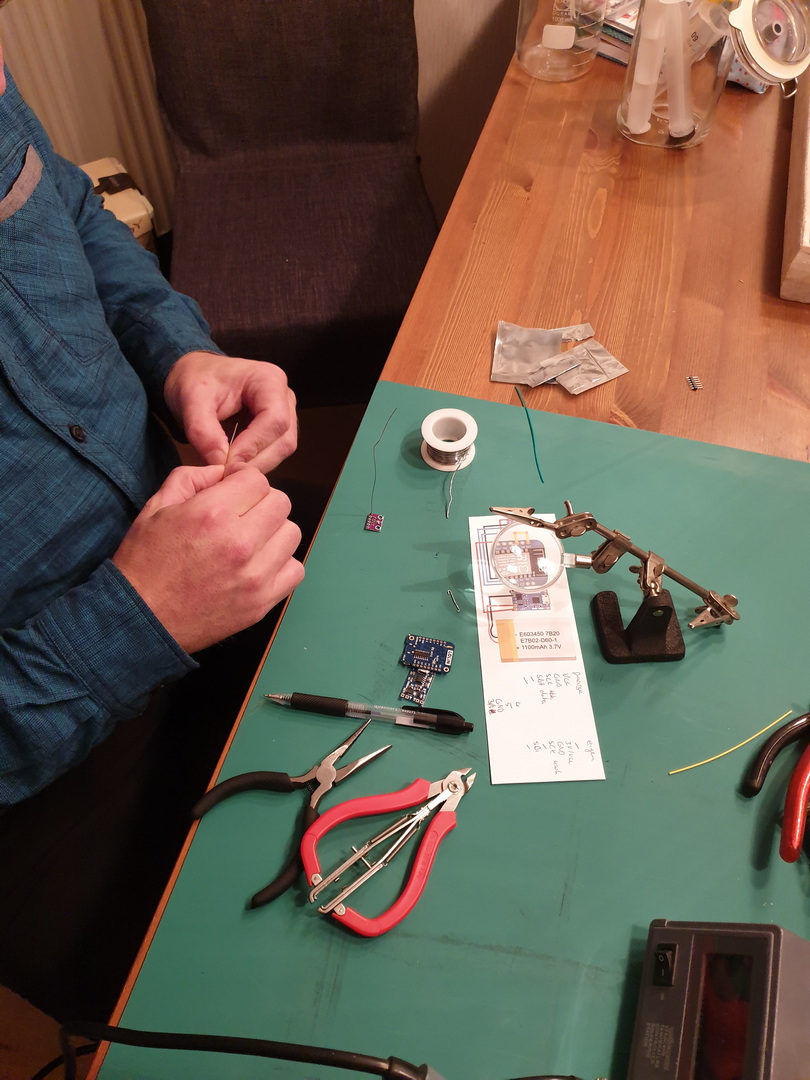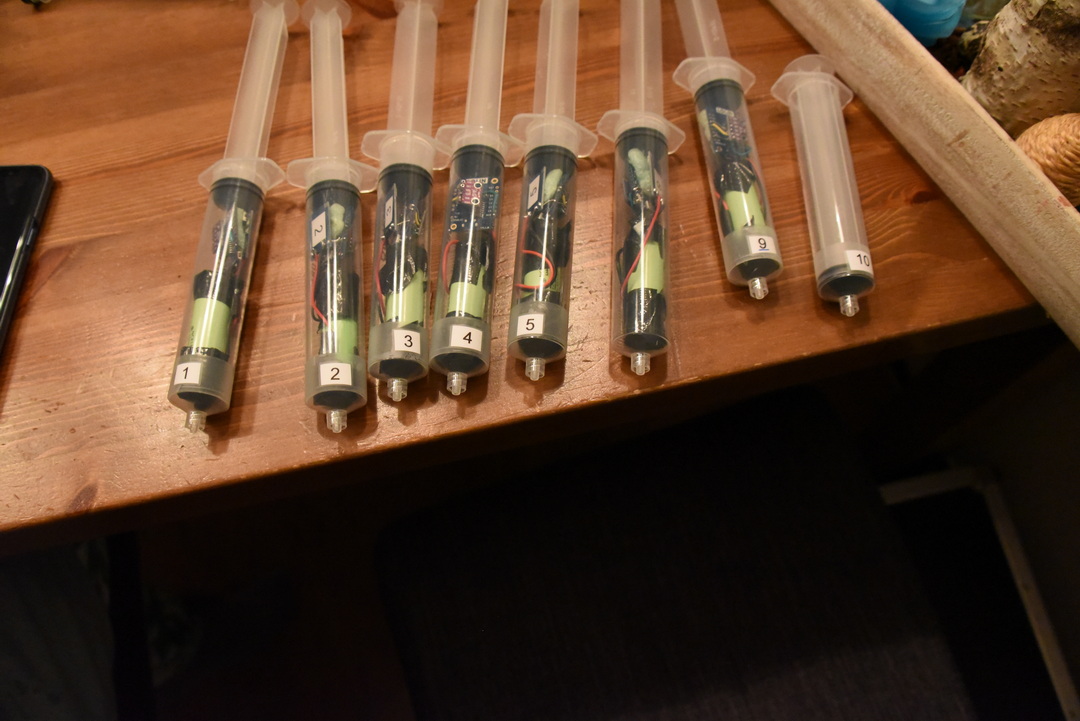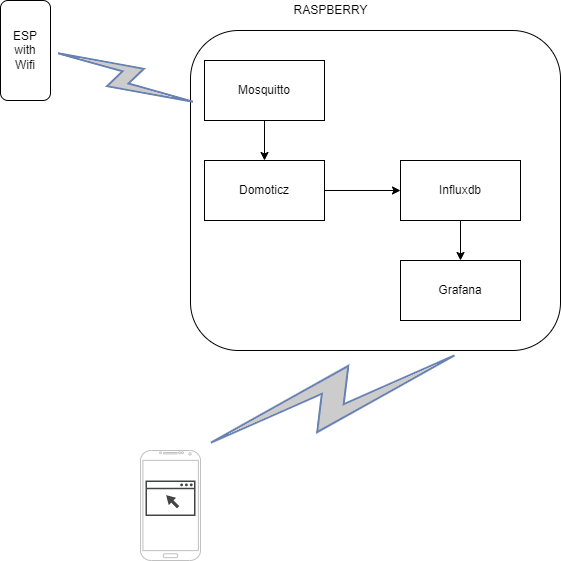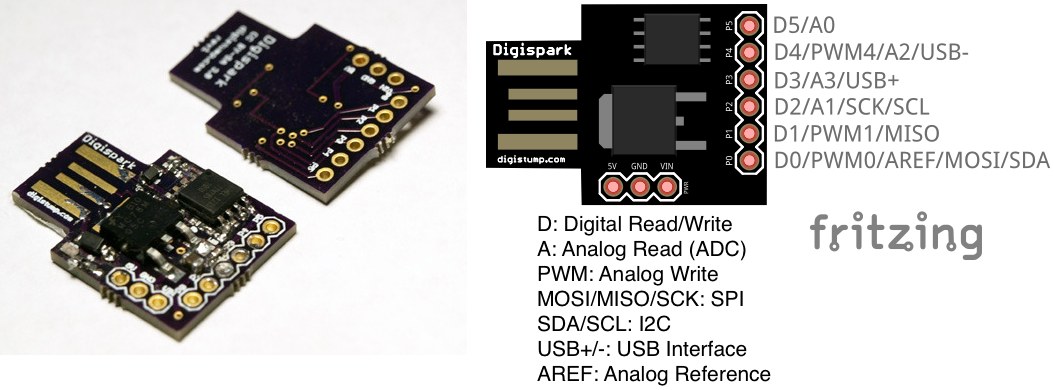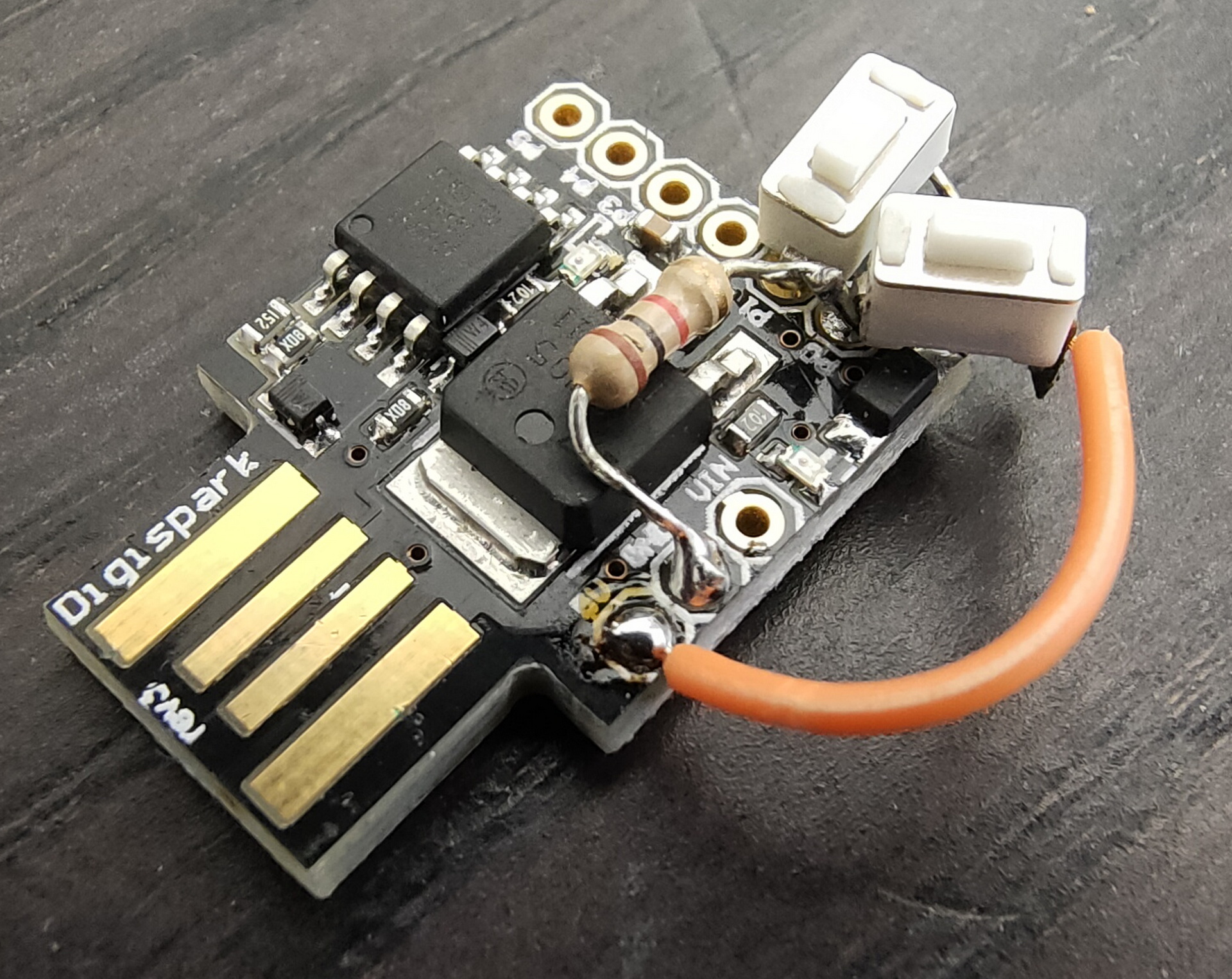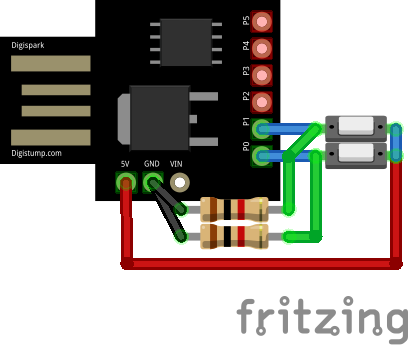- Cursor pad on the left
- 1 till 5 (see below)
- star + 1-5, rates 1 till 5 stars
- outline star – removes rating
- bookmark + 1-5, color marks image
- Triangle – start slideshow
- zoom-in, rotate CCW, reset zoom, rotate CW, zoom-out
- previous image, open image, fullscreen, exit fullscreen to manager and next image
I’ve used a esp32 with 18650 battery holder.
I still have to 3d print a case 🙂
Code:
#include <BleConnectionStatus.h>
#include <BleKeyboard.h>
#include <KeyboardOutputCallbacks.h>
#define DEBUG 0micro joystick
#define STAR 16
#define FLAG 17
#define COL1 18
#define COL2 19
#define COL3 21
#define COL4 22
#define COL5 23
#define COL6 25
#define ROW1 26
#define ROW2 27
#define ROW3 32
#define ROW4 33
int flagstate = 0;
int starstate = 0;
int row1state = 0;
int row2state = 0;
int row3state = 0;
int row4state = 0;
int col1state = 0;
int col2state = 0;
int col3state = 0;
int col4state = 0;
int col5state = 0;
int col6state = 0;
int colstate = 1;
BleKeyboard bleKeyboard;
void setup() {
#ifdef DEBUG
Serial.begin(9600);
#endif
bleKeyboard.begin();
pinMode(STAR, INPUT_PULLUP);
pinMode(FLAG, INPUT_PULLUP);
pinMode(ROW1, INPUT_PULLUP);
pinMode(ROW2, INPUT_PULLUP);
pinMode(ROW3, INPUT_PULLUP);
pinMode(ROW4, INPUT_PULLUP);
pinMode(COL1, OUTPUT);
pinMode(COL2, OUTPUT);
pinMode(COL3, OUTPUT);
pinMode(COL4, OUTPUT);
pinMode(COL5, OUTPUT);
pinMode(COL6, OUTPUT);
}
void loop() {
#ifdef DEBUG
Serial.print("Colstate : ");
Serial.print(colstate);
Serial.print('\n');
#endif
if (colstate == 1) {
digitalWrite(COL1, LOW);
digitalWrite(COL2, HIGH);
digitalWrite(COL3, HIGH);
digitalWrite(COL4, HIGH);
digitalWrite(COL5, HIGH);
digitalWrite(COL6, HIGH);
}
if (colstate == 2) {
digitalWrite(COL1, HIGH);
digitalWrite(COL2, LOW);
digitalWrite(COL3, HIGH);
digitalWrite(COL4, HIGH);
digitalWrite(COL5, HIGH);
digitalWrite(COL6, HIGH);
}
if (colstate == 3) {
digitalWrite(COL1, HIGH);
digitalWrite(COL2, HIGH);
digitalWrite(COL3, LOW);
digitalWrite(COL4, HIGH);
digitalWrite(COL5, HIGH);
digitalWrite(COL6, HIGH);
}
if (colstate == 4) {
digitalWrite(COL1, HIGH);
digitalWrite(COL2, HIGH);
digitalWrite(COL3, HIGH);
digitalWrite(COL4, LOW);
digitalWrite(COL5, HIGH);
digitalWrite(COL6, HIGH);
}
if (colstate == 5) {
digitalWrite(COL1, HIGH);
digitalWrite(COL2, HIGH);
digitalWrite(COL3, HIGH);
digitalWrite(COL4, HIGH);
digitalWrite(COL5, LOW);
digitalWrite(COL6, HIGH);
}
if (colstate == 6) {
digitalWrite(COL1, HIGH);
digitalWrite(COL2, HIGH);
digitalWrite(COL3, HIGH);
digitalWrite(COL4, HIGH);
digitalWrite(COL5, HIGH);
digitalWrite(COL6, LOW);
}
delay (100);
flagstate = digitalRead(FLAG);
starstate = digitalRead(STAR);
row1state = digitalRead(ROW1);
row2state = digitalRead(ROW2);
row3state = digitalRead(ROW3);
row4state = digitalRead(ROW4);
#ifdef DEBUG
Serial.print("Rowstates : ");
Serial.print(row1state);
Serial.print(row2state);
Serial.print(row3state);
Serial.print(row4state);
Serial.print('\n');
#endif
// ROW1 = UP,DOWN,LEFT,RIGHT
if (bleKeyboard.isConnected() && colstate == 1) {
// UP
#ifdef DEBUG
Serial.print("Up Pressed ");
Serial.print('\n');
#endif
if (row1state == 0) {
bleKeyboard.press(KEY_UP_ARROW);
delay (100);
bleKeyboard.releaseAll();
}
// DOWN
if (row2state == 0) {
bleKeyboard.press(KEY_DOWN_ARROW);
delay (100);
bleKeyboard.releaseAll();
}
// LEFT
if (row3state == 0) {
bleKeyboard.press(KEY_LEFT_ARROW);
delay (100);
bleKeyboard.releaseAll();
}
// RIGHT
if (row4state == 0) {
bleKeyboard.press(KEY_RIGHT_ARROW);
delay (100);
bleKeyboard.releaseAll();
}
}
// ROW2 = (1),(star),ZOOMIN,PREVIOUS
if (bleKeyboard.isConnected() && colstate == 2) {
// 1 - star
if (row1state == 0 && starstate == 0) {
bleKeyboard.press(KEY_LEFT_CTRL);
bleKeyboard.press('1');
delay (100);
bleKeyboard.releaseAll();
}
// 1 - flag
if (row1state == 0 && flagstate == 0) {
bleKeyboard.press(KEY_LEFT_ALT);
bleKeyboard.press('1');
delay (100);
bleKeyboard.releaseAll();
}
// NO ROWSTATE2
// zoom in
if (row3state == 0) {
bleKeyboard.press('+');
delay (100);
bleKeyboard.releaseAll();
}
// PREVIOUS
if (row4state == 0) {
bleKeyboard.press(KEY_LEFT_CTRL);
bleKeyboard.press(KEY_LEFT_ARROW);
delay (100);
bleKeyboard.releaseAll();
}
}
// ROW3 = (2),unstar,CCWrotate,open
if (bleKeyboard.isConnected() && colstate == 3) {
// 2 - star
if (row1state == 0 && starstate == 0) {
bleKeyboard.press(KEY_LEFT_CTRL);
bleKeyboard.press('2');
delay (100);
bleKeyboard.releaseAll();
}
// 2 - flag
if (row1state == 0 && flagstate == 0) {
bleKeyboard.press(KEY_LEFT_ALT);
bleKeyboard.press('2');
delay (100);
bleKeyboard.releaseAll();
}
// unstar
if (row2state == 0) {
bleKeyboard.press(KEY_LEFT_CTRL);
bleKeyboard.press('0');
delay (100);
bleKeyboard.releaseAll();
}
// CCW rotate
if (row3state == 0) {
bleKeyboard.press(KEY_LEFT_CTRL);
bleKeyboard.press(KEY_LEFT_ALT);
bleKeyboard.press(KEY_LEFT_ARROW);
delay (100);
bleKeyboard.releaseAll();
}
// open
if (row4state == 0) {
bleKeyboard.press(KEY_RETURN);
delay (100);
bleKeyboard.releaseAll();
}
}
// ROW4 = (3),(flag),zoom,fullscreen
if (bleKeyboard.isConnected() && colstate == 4) {
// 3 - star
if (row1state == 0 && starstate == 0) {
bleKeyboard.press(KEY_LEFT_CTRL);
bleKeyboard.press('3');
delay (100);
bleKeyboard.releaseAll();
}
// 3 - flag
if (row1state == 0 && flagstate == 0) {
bleKeyboard.press(KEY_LEFT_ALT);
bleKeyboard.press('3');
delay (100);
bleKeyboard.releaseAll();
}
// NO ROWSTATE2
// zoom reset
if (row3state == 0) {
bleKeyboard.press('*');
delay (100);
bleKeyboard.releaseAll();
}
// fullscreen
if (row4state == 0) {
bleKeyboard.press('f');
delay (100);
bleKeyboard.releaseAll();
}
}
// ROW5 = (4),unflag,CWrotate,exit
if (bleKeyboard.isConnected() && colstate == 5) {
// 4 - star
if (row1state == 0 && starstate == 0) {
bleKeyboard.press(KEY_LEFT_CTRL);
bleKeyboard.press('4');
delay (100);
bleKeyboard.releaseAll();
}
// 4 - flag
if (row1state == 0 && flagstate == 0) {
bleKeyboard.press(KEY_LEFT_ALT);
bleKeyboard.press('4');
delay (100);
bleKeyboard.releaseAll();
}
// unflag
if (row2state == 0) {
bleKeyboard.press(KEY_LEFT_ALT);
bleKeyboard.press('0');
delay (100);
bleKeyboard.releaseAll();
}
// CW rotate
if (row3state == 0) {
bleKeyboard.press(KEY_LEFT_CTRL);
bleKeyboard.press(KEY_LEFT_ALT);
bleKeyboard.press(KEY_RIGHT_ARROW);
delay (100);
bleKeyboard.releaseAll();
}
// exit
if (row4state == 0) {
bleKeyboard.press(KEY_ESC);
delay (100);
bleKeyboard.releaseAll();
}
}
// ROW6 = (5),slideshow,zoomout,next
if (bleKeyboard.isConnected() && colstate == 6) {
// 5 - star
if (row1state == 0 && starstate == 0) {
bleKeyboard.press(KEY_LEFT_CTRL);
bleKeyboard.press('5');
delay (100);
bleKeyboard.releaseAll();
}
// 5 - flag
if (row1state == 0 && flagstate == 0) {
bleKeyboard.press(KEY_LEFT_ALT);
bleKeyboard.press('5');
delay (100);
bleKeyboard.releaseAll();
}
// slideshow
if (row2state == 0) {
bleKeyboard.press(KEY_ESC);
bleKeyboard.press(KEY_LEFT_CTRL);
bleKeyboard.press('s');
delay (100);
bleKeyboard.releaseAll();
}
// zoom out
if (row3state == 0) {
bleKeyboard.press('-');
delay (100);
bleKeyboard.releaseAll();
}
// next
if (row4state == 0) {
bleKeyboard.press(KEY_LEFT_CTRL);
bleKeyboard.press(KEY_RIGHT_ARROW);
delay (100);
bleKeyboard.releaseAll();
}
}
colstate++;
if (colstate == 7) {
colstate = 1;
}
}
